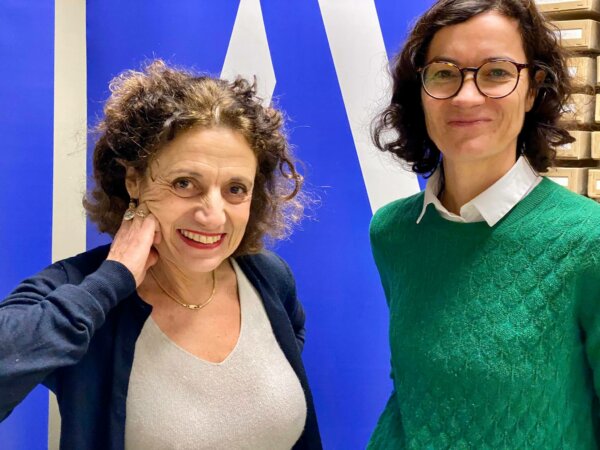A Paper Monument

Over seventy years of tracing missing persons, clarifying fates, and documenting Nazi crimes: Our first ever permanent exhibition presenting the eventful history of the Arolsen Archives opened in June 2019. It uses individual fates to tell visitors the story of how the world’s largest archive on the victims and survivors of Nazi persecution was created in Bad Arolsen and explains the various aspects of the work done by its staff today.
It’s not just about looking back, it’s also about connecting the history of the archive with the world we live in today: During the planning phase, this aspect was particularly important to the exhibition’s curators– Henning Borggräfe, Christian Höschler, and Isabel Panek from the Research and Education department. At the opening on June 18, 2019, Monika Grütters, Germany’s Minister of State for Culture and the Media, emphasized just how relevant the work of the institution is for society today:

»The exhibition shows very vividly how the Arolsen Archives reunited people or clarified their fates in the aftermath of the terrible crimes committed by the National Socialists. This task remains important today because subsequent generations have a deep-seated need for certainty.«
Monika Grütters, German Federal Government Commissioner for Culture and the Media (until November 2021)


Interactive and informative
In order to appeal to young people in particular and to provide exhibits that are interesting for schools classes, the exhibition contains various interactive elements. For example, audio stations give visitors the opportunity to listen to rare recordings of post-war radio appeals for information about missing persons. Video animations use the specific fates of individual victims of Nazi persecution to explain how staff process inquiries and work with documents.
A place of truth
Part of the exhibition also shows how the millions of tracing inquires submitted to the Arolsen Archives have become a valuable resource documenting the consequences of tyranny. It also outlines how the way historical testimony is dealt with has changed over the past decades and how attitudes to the victims of National Socialist crimes have changed. The name of the exhibition “A Paper Monument” harks back to words spoken by Holocaust survivor Thomas Buergenthal underlining the value of the archive as a place of truth and remembrance. His story is one of the many individual fates featured in the exhibition.


A long wall made of thousands of the original boxes used to hold the “Central Name Index” is one of the centerpieces of “A paper Monument.” The index contains 50 million reference cards on the fate of 17.5 million people – only 20 percent can be seen at the exhibition. Tall towers of paper show the height the archival documents would reach in relation to the Eiffel tower or Mount Everest if they were stacked on top of each other.
In slow motion
This is how we built the huge wall with the Central Name Index in the exhibition.
Open to all
The permanent exhibition is housed in a former department store at Schloßstraße 10, not far from the town’s baroque palace, and is open from Tuesday to Saturday from 2pm to 5pm. Admission is free. Guided tours for individual visitors are held in English on every first Tuesday of the month at 2 pm and in German on every first Wednesday of the month at 2 pm. Anyone who wants to take part can register in advance by sending an e-mail to visitorgroup(at)arolsen-archives.org. Guided tours can also be organized for schools and other groups. To arrange a group tour, please send a request to the same address.

Events
The exhibition space and the exhibition itself are used for workshops, seminars, and lectures on a regular basis. In 2019, there was also an exciting program of events to accompany the exhibition. These included a reading by author, actress, and theatre director Adriana Altaras, who read from her German-language novel “Die jüdische Souffleuse”, which tells how the main character’s quest for information about her family takes her to the Arolsen Archives.

